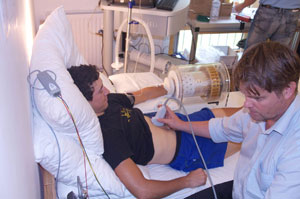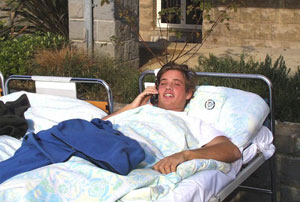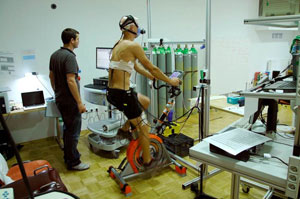SAPC Activities
Exposure to weightlessness or reduced gravity induces substantial adaptive changes in several of the organ systems of the body. For instance skeletal muscles, long bones as well as the circulatory system are less stressed in weightlessness or microgravity than at normal gravity. Several of the physiological adaptations that develop in weightlessness can be induced and studied by means of ground-based simulation techniques, of which the most commonly applied is exposure of healthy individuals to prolonged, sustained bed rest, either in the horizontal position or tilted in a slightly head-down position. SAPC is currently involved in studies concerning physiological responses – cardiovascular, musculoskeletal and metabolic – to prolonged bedrest.
• Two multinational collaborative studies are investigating physiological responses to 10- and 21-day exposures to sustained horizontal bedrest in combination with hypoxia. The experiments have implications for future planetary habitats, in which humans will be exposed to a combination of reduced gravity and hypoxia.
• Another project investigates the effects of 35 days of sustained bedrest, in particular how human peripheral blood vessels respond to removal of gravity-dependent hydrostatic pressure components acting along the vessels. This project also investigates to what degree the musculoskeletal and circulatory adaptations anticipated during prolonged space flights will affect the risk of decompression sickness during extra vehicular activities (“space walks”).




